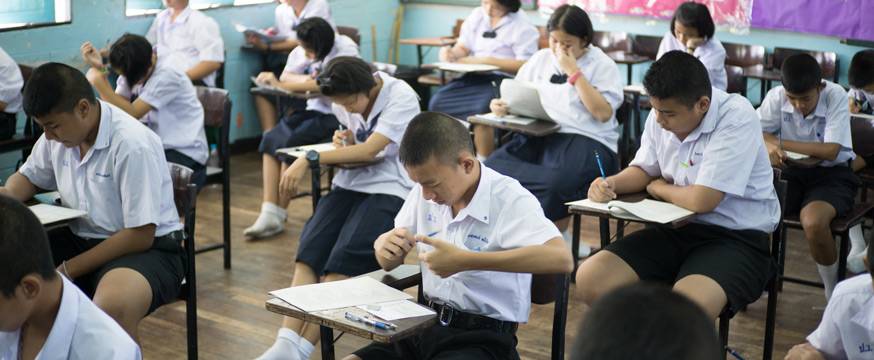
Exploring the policy use of large-scale assessment data
Research 15 Nov 2016 3 minute readA new publication will examine the link between large-scale assessments and education policy through examples from the Americas, the Asia-Pacific region, Europe and the Middle East. Petra Lietz reports.
Over the past 50 years large-scale assessments have become ubiquitous.
In a recent systematic review of the impact of large-scale assessments on education policy, it was estimated that learning assessments are now being undertaken in about 70 per cent of the countries in the world.
For example, the Programme for International Student Assessment (PISA), conducted by the Organisation for Economic Cooperation and Development, was implemented in 75 countries in 2015 with around 510 000 participating students. Similarly, the Trends in International Mathematics and Science Study (TIMSS), conducted by the International Association for the Evaluation of Educational Achievement, in 2015 collected information from schools and students in 59 countries.
Given their widespread implementation, one would assume that large-scale learning assessments are well-designed and well-implemented, and have a profound policy impact. Surprisingly, though, relatively little independent and systematic research examines the policy use of large-scale assessment data outside of high-income countries in Europe and North America. This applies even when taking into account a broad array of policy documents such as education department reports, presentations, evaluations and progress reports from development agencies.
A special issue of the journal Research Papers in Education provides evidence of the relationship between large-scale assessments and education policy, and the way in which the political, economic and social contexts of different countries shape this relationship.
Examples from Chile, Hong Kong, Italy, Jordan, Mexico, and the United States of America, as well as from economically developing countries and countries in the Asia-Pacific, presented in the journal show that results of large-scale assessments have influenced mainly curricular reforms and performance standards. They also illustrate how different political priorities as well as government and education system structures have facilitated or hindered the impact of large-scale assessments on education policy.
Finally, the examples illustrate that integration into policy processes, increased training in the analysis and reporting of results from large-scale assessments to inform policy, and funding certainty would contribute to achieving the aim of realising the full potential of large-scale assessments.
Further information:
Articles from the Research Papers in Education (Volume 31, Issue 5) special issue, ‘The Impact of Large-Scale Assessments in Education on Education Policy: Evidence from around the world’, edited by Petra Lietz and Mollie Tobin, are available online to individual and institutional subscribers, with the print publication available in early 2017.